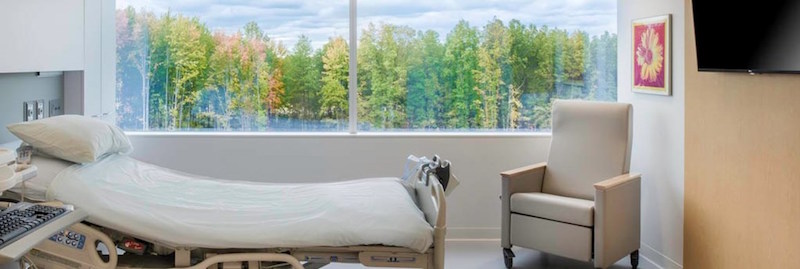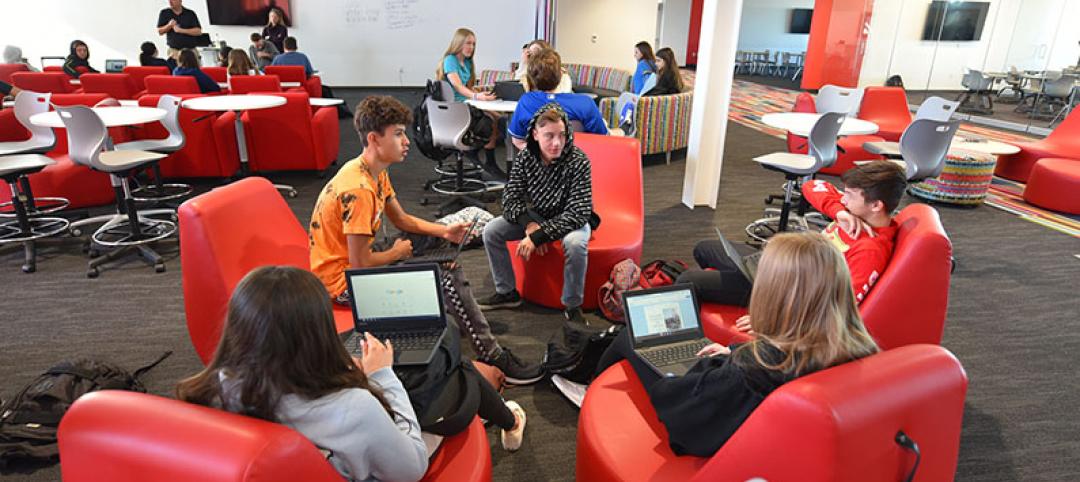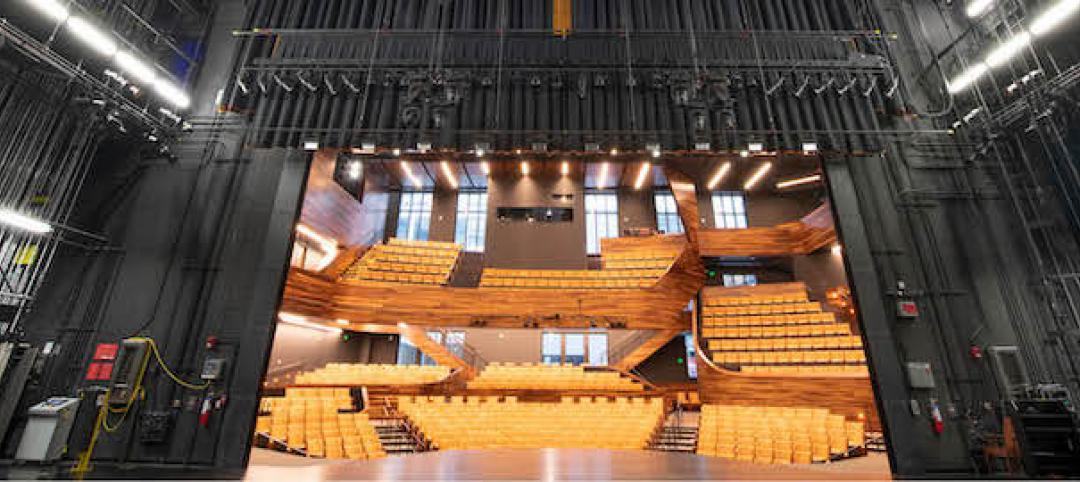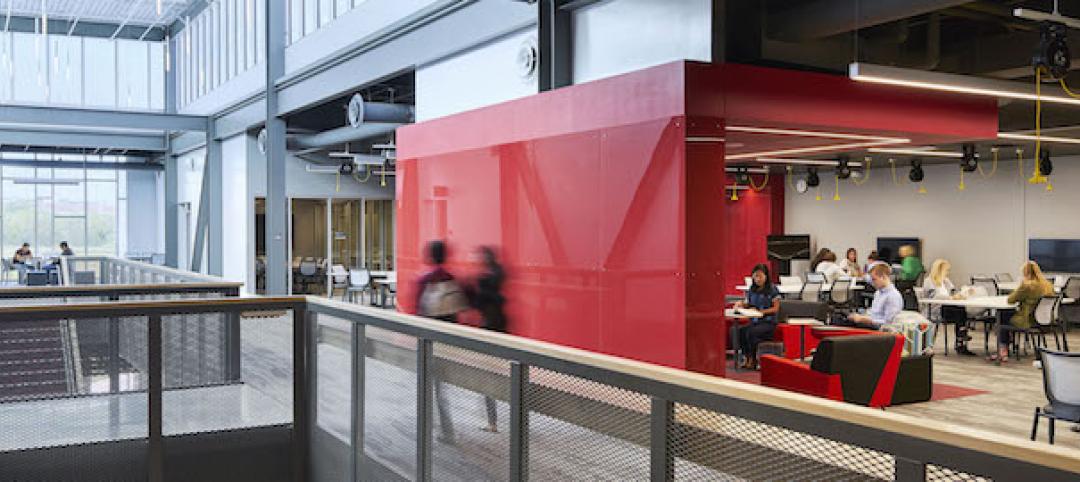At the outset of the Cleveland Clinic Avon Bed Tower project, our designers were challenged with the goal of creating the “Hospital of the Future.” But what exactly is the hospital of future? Or more specifically, what is the future of healthcare design? The answer to these questions would not come from a group of architects and engineers in a DLR Group|Westlake Reed Leskosky conference room. The answer would instead come from a deep understanding of the needs of the patients and providers who occupy the building through the use of an evidence-based design (EBD) approach.
What does it mean to have an EBD approach? For the Avon Bed Tower project, it meant enlisting insight from a variety of stakeholders with a variety of experiences and expertise. One of our first steps was to broaden our team to include a PhD researcher who helped us define two key ideas; which questions we should ask, and how to integrate an EBD approach into a fast-track design delivery process. We brought in enterprise leaders, and engaged in visioning sessions throughout each stage of the project to flesh out ideas and work through challenges.
What resulted from this (somewhat) unconventional approach is a new 225,000-SF inpatient bed tower that leverages flexibility and technology to deliver to patients and providers a truly exceptional facility. Within each room, for example, the patient can conveniently control lighting and temperature, as well as personal information systems through an interactive television. The judicious use of acoustic treatments and enclosures of the interdisciplinary work stations creates a quiet patient environment, while an acuity-adaptable room is configured within the same module to address intensive care requirements. These are just a few of the many instances where our evidence-based approach led to designs that make life easier for hospital users.
So, how did we get there? Below are four key takeaways our team gained from our collaborative evidence-based design for this hospital of the future.
Take Time to Develop Your Value Proposition
A value proposition is, in essence, a promise of what we will deliver to our clients. More than this, the value proposition is an idea, couched in broad-based, independent accreditation of a concept. When executed, it should provide positive improvements for patients, caregivers, and operations, while also keeping the facility’s return on investment in mind. Our value proposition for the Avon Bed Tower was rooted in the Cleveland Clinic’s strong investment in research, and our design approach reflected this emphasis. We took time to study our patient room mock-up, adding and removing elements to create a final design that would improve the hospital’s daily operations, enhance the patient experience, and save the client money in the long-term.
Do Your Research
However well-meaning, prepared, and equipped any team may be, the challenge of validating a new approach can be a difficult one. One way to overcome this challenge is to leverage the large body of evidence-based design research. In our work on the Avon Bed Tower, scientific literature research provided assessment, validation of relevance, and possible applications on key topics. Meta-synthesis agglomerates data from scientific studies and real project parameters such as organizational culture, site, budget, and schedule. It is a process that enables design researchers to identify a specific research question and then search for, select, appraise, summarize, and combine scientific evidence and project parameters to address the research question.This exercise worked to dispel opinions, and confirmed best practices and theories that ultimately helped guide our design.
Utilize Patient Advocacy Surveys
It can be difficult to fully quantify how and when our designs improve the patient experience. But unless we ask, we’ll never know. What better way to put patients first than to ask them directly for their opinion? With the Avon Bed Tower project, we engaged patients to gain greater insight into what they need in a facility—they are, after all, the reason why the building exists. Using an online questionnaire, we asked a random set of hundreds of patients to assess inpatient unit footwall renderings and furnishings. When combined with scientific evidence, the results of these patient advocacy surveys enabled us to refine our design goals and focus on creating spaces that ultimately improve the patient experience.
Conduct Post-Occupancy Evaluations
When we completed the Avon Bed Tower in 2016, we knew we weren’t done gaining insight from the project. Working with the Cleveland Clinic, we created self-report questionnaires we could administer to patients and providers as a way to conduct a post-occupancy evaluation and see the true impact of our design. Preliminary results from these anecdotal reports are very positive:
- Providers report enhanced levels of service delivery thanks to access in updated patient room design.
- Patients noted improvements in “quiet at night,” per Press Ganey.
- Medical staff engaged more collaboratively as a result of interdisciplinary work stations.
- Patients and providers alike expressed enjoyment of the views and natural light in the new building.
Whether you’re a hospital administrator or a healthcare designer, when considering your next project, it’s important to ask yourself whether what you end up with will be a repeat of the past or an improvement that looks towards the future. Our experience working on the Avon Bed Tower has shown that hospitals of the future should not only respond to but anticipate the needs of patients and providers. Evidence-based design allows us to better understand these needs, resulting in facilities that save money, improve patient outcomes, and enrich lives.
More from Author
DLR Group | Oct 30, 2024
Reasons to reinvent the Midcentury academic library
DLR Group's Interior Design Leader Gretchen Holy, Assoc. IIDA, shares the idea that a designer's responsibility to embrace a library’s history, respect its past, and create an environment that will serve student populations for the next 100 years.
DLR Group | Jan 8, 2024
DLR Group adds executive leaders
DLR Group Chief Executive Officer Steven McKay, AIA, RIBA, announced new executive leaders for the 100% employee-owned, globally integrated design firm.
DLR Group | Nov 30, 2023
A lasting housing impact: Gen-Z redefines multifamily living
Nathan Casteel, Design Leader, DLR Group, details what sets an apartment community apart for younger generations.
DLR Group | Nov 6, 2023
DLR Group opens office in Nashville, Tenn.
DLR Group is expanding its presence in the Southeast with the opening of an office in downtown Nashville, Tenn.—a collaborative effort led by DLR Group Principals Matthew Gulsvig, AIA, LEED AP, and Randall Coy.
DLR Group | Jan 27, 2021
Selecting indoor air quality monitors to maintain healthy spaces
In searching for an indoor air quality monitor, most devices will measure a combination of temperature, relative humidity, carbon dioxide, particulate matter, and total volatile organic compounds.
DLR Group | Sep 1, 2020
The rise of inquiry-based learning in K-12 communities
Inquiry-based education offers a methodology that does not rely solely on the educator being the lead in all learning.
DLR Group | Aug 31, 2020
Reopening campus performance arts centers
Live productions, which offer students the opportunity to hone their skills with true audience feedback, currently pose health risks for students and faculty.
DLR Group | Jun 11, 2019
The power and possibility of adaptive reuse
Building reuse generally offers greater environmental savings than demolition or new construction.
DLR Group | Apr 29, 2019
A look ahead to learning in 2050
Fast forward to the year 2050 and beyond, and imagine what education looks like.
DLR Group | Aug 31, 2018
The building data analytics revolution in three acts
Increased transparency of operational building data is impacting accountability.
















